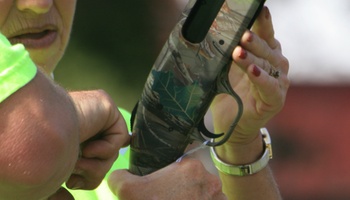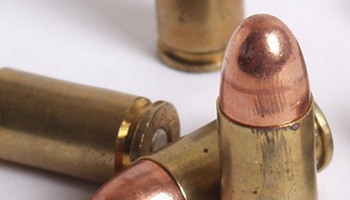|
|
HOME DEFENSEAs part of its commitment to the safety and security of its customers, Strong Persuader is focused on providing you ample information concerning home defense. This seems to be a focal point for those shopping for or buying firearms. However, while it may seem odd for someone dealing in firearms to say this, a firearm is the absolute last resort in home defense. Keep in mind that you should not rely on a firearm for the primary defense of your family and property. By the time you get to the point where you would potentially use a firearm, an intruder or someone else threatening harm to you and yours, is already on or in your property and is an imminent threat. The best home defense is just that, defense. Your offensive use of a weapon is an absolute last resort.
The best way to think about home defense is to think about it in a layer of concentric circles. First is the area around what you’re trying to protect. This may include the streets in your neighborhood, your neighbors, and the surrounding area. Take a very critical look at all of that on your next drive home. Are the streetlights working in your area? Is there evidence of new people moving into your neighborhood? Has the overall condition and maintenance of your neighboring properties gone down? Have your neighbors complained of suspicious persons in the area or of break-ins? Get to know your neighbors. Each person you know is a multiplier of information available to you. Keep track of what goes on in your neighborhood, whether you think it personally involves you or not. In this first defensive perimeter, report to your city or county government when streetlights are not working. Or, if you do not have streetlights at all, contact the council or commission member with responsibility for your neighborhood and complain of the lack of streetlights. Additionally, is any government owned property near you overgrown or has it become a haven for transients? If so, document those areas photographically or even through a video, and submit them to your government officials. Eliminating the likelihood of a potential threat to your family and property begins in that outer perimeter area. Do not let the government off the hook for their responsibility to assist in maintaining it. The second area of concern is within your neighborhood. Again, have new people moved in that appear to be a problem through increased police activity or some other indicator that those people may not be the best neighbors? Look for and report suspicious persons in the neighborhood or suspicious vehicles. A 2012 rash of burglaries in the Winter Park and College Park area were tied to a silver car parked in the driveway of some homes where break-ins occurred. The police were alerted to this through the reports of various neighbors and other witnesses who called the police to report that vehicle or vehicles similar when they saw it. Is there the potential for you to otherwise get the police involved with someone or something that is truly not a problem? Absolutely. However, unless you completely overdo it, you will find that your police and sheriff departments welcome the input from neighbors to report suspicious activity, even if it does not pan out to be a problem. The third area within the concentric circles is your own property. Walk around your house and yard. Do you have adequate lighting all around it? Are your lights on automatic timers or motion sensors such that through the evening, your property is adequately lit to dissuade anyone from attempting to find refuge there? Do you have sheds or outbuildings? Make sure they are properly secured. Do you have high hedges or shrubbery next to your home? Most any home security professional will tell you to cut those hedges back and thin them out so that potential prowlers or those seeking entry into your home cannot do so in a semi-concealed or concealed fashion. Are all of your gates secured? Check all your windows and doors. Do all the locks work? In those places where it would be easy for a person to simply break the glass, reach through, and unlock the doors, consider locks that require keys on the inside also. Don’t skimp on an investment in locks for all your doors. High quality, but economically priced, locking systems work for most homes and are a sound investment for your home. Consider investing in an alarm system. Most large alarm companies now will charge little or nothing for the installation to get your business. Monitoring contracts for most homes are very reasonable, particularly so when compared to the safety and security they provide. Always, however, pay close attention to the contract you are being asked to sign, deal only with reputable companies, and clearly understand the terms of your contract. Are your vehicle secure? If not locked in a garage (consider whether your garage door opener has rolling code technology, if not, upgrade to it so thieves cannot easily steal your opener code), be sure they are locked, the security systems are engaged and all valuables are removed or out of sight. Park in lighted areas. Do not “billboard” your cars with stickers identifying expensive installed equipment. Fourth, think about the areas inside your home. Is all of your family, including your children, clear on what to do in case of an emergency? Not only thinking about break-ins or intruders, do you have an emergency plan in case there is a fire or flood in the house? Does everyone know their responsibilities in such a circumstance or, at a minimum, know where to go? Telling the kids to “just find Mom or Dad” or other type of statement is not sufficient. Mom, Dad and the kids need to know where to go to meet in the case of an emergency. Having a security plan is just as important as any other emergency plan. Most all of us have a plan in place in case of a hurricane or tornado and no less time should be spent on an inside security plan. At a minimum, this plan should include a specific location where everyone is to go and meet if there is a problem. This location should be a limited access location easily secured, but with access to a telephone. Why a telephone? So someone can call 911. Also, do not count on your landline in these circumstances. Phone lines run outside the house, and are easily cut by a determined intruder. Make sure someone has access to a cell phone, leave it by the bed at night, and ensure even the children know how to dial 911. Additionally, everyone of appropriate age should know how to operate the alarm panel of the security system and, if available, to use that security system to alert fire or police to any emergency. Another thing to consider inside the home is how to further discourage people from entering. One of the simplest and most effective methods is to simply have a dog. It does not have to be a high priced security dog, but merely a dog that will respond when someone knocks on the door or will be there at night to wake the family should it detect something untoward. Moreover, unfortunate as it is to say, it is often that prowlers look for the easiest target. If your home has an alarm system and a barking dog, they are far more likely to move down the street to find a person who does not. A dog is an incredible deterrent to most burglars and will convince them that your home is not the low hanging fruit for them. A final deterrent is just the simple adage of don’t show off. While we all want a nice home in a nice neighborhood, there is no reason to make the availability of what may be in that home apparent to others. Any home security expert would tell you to avoid placing high value items (HDTVs, computers, jewelry) in view of open windows where anyone walking by could see them. If you have taken all these measures and still want the added measure of a potential offensive weapon if someone does enter your house, Strong Persuader can service all your needs. In this regard, bigger is often not better. The key to an appropriate home defense weapon is its ease of security and ease of use. Large caliber guns, which can shoot through walls in the home, may provide you a better feeling of security, but in actual use, could be more damaging than you expect. Similar reasoning applies to shotguns and rifles in home defense. Rifles should never be used, not only because of their firepower, but because they are also in most cases fairly unwieldy; shotguns should only be considered with the right type of loads. One does not want to load a 12 gauge shotgun with buckshot or slugs in an effort to provide home defense. Just like high caliber pistols, those rounds can carry through walls and provide unintended, or tragic, circumstances. For home defense, you should consider the following: • What size of weapon is most comfortable for you, and anyone else potentially using it, to handle? • What are your property dynamics? Someone living in a rural area with outbuildings or a larger tract of land may have different needs than an urban apartment dweller. • Ease of use. • Ease of accessibility. • Use in nighttime or lowlight environments. • The ability to properly secure the firearm because SAFETY IS THE NO. 1 CONCERN. If you are looking for the appropriate firearm to serve a home defense need, contact Strong Persuader and we will walk you through your own personal preferences and needs and find the right weapon and accessories for you at the right price. |


